Ferguson
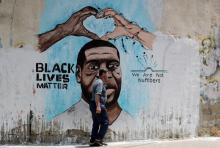
The story of Zion resonates with the history of African Americans. Blacks and Jews share common legacies of segregation, genocide, and racial domination. No wonder many enslaved Africans understood biblical Israel as a symbol of freedom from bondage. As historian Robin D.G. Kelley explains, the story of Exodus “provided Black people not only with a narrative of slavery, emancipation, and renewal, but with a language to critique America’s racist state.” Exodus was our political compass through the wilderness of slavery. Except we imagined ourselves as the Israelites, America as Egypt, and “Massa” as the Pharaoh whom freedom fighters like Nat Turner and Harriet “Moses” Tubman demanded, “Let my people go!”
But my view of Israel changed when I learned about Palestine in the streets of Ferguson, Mo.
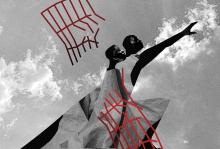
BLACK LIVES MATTER. In the years since 17-year-old Trayvon Martin was murdered in his hoodie carrying Skittles, we have learned why this phrase is not simply a consequence of all lives mattering. The world systematically devalues Black life, turns Black life into death-bound life, and it is our task — as justice seekers and as Christians — to embrace Black resurrection.
Politically that makes sense, but what does it mean theologically? Surely Christianity proclaims that all might be saved, independent of skin color. A half-century ago, James Cone and fellow Black theologians embraced this theological challenge head-on. They charged that the possibility of life after death for any individual is inextricably linked to the struggle against the death-dealing forces of white supremacy. How might we fill out this insight today, with Black Power slogans themselves finding new life and new form as activists embrace Black joy, Black excellence, Black rage, Black love, and Black dignity?
In a definition that has rapidly gained traction in activist circles, Black prison abolitionist and scholar Ruth Wilson Gilmore defines racism as “the state-sanctioned or extralegal production and exploitation of group-differentiated vulnerability to premature death.” Black studies scholars have refined and deepened this claim, arguing that anti-Black racism names a system of laws, institutions, feelings, and even forms of seeing and thinking that make Black life particularly vulnerable to premature death. Slavery may have ended in the 19th century, but many of the structures and habits that made slavery possible, that made it plausible for Black human beings to be treated as less than human, persist, and those structures and habits function by making Black life precarious. One false move, and the police officer or prison guard or neighbor or privileged “Karen” may invoke the violent power of whiteness to put an early end to Black life.

DEBATE THE CHOICE all you want, but what was radical about a congressional candidate’s ban on press at an August public town hall event wasn’t her decision to shut out journalists. It was how publicly she was willing to attempt new things, to try to make democracy work for a new slice of participants.
“We are genuinely trying to create environments where our constituents feel comfortable expressing honestly and engaging in our discourse,” she tweeted. “Genuine Q?: how should we label a free campaign event, open to all, that’s a sanctuary space?”
Though she and other justice-minded public officials may not use these words, what they are attempting is a kind of human-centered design.
Human-centered design is fairly self-explanatory: When designing systems, services, or products, creators place humans at the center. But in practice, this can be radical: If my focus is to make an experience better for each user, I will design for individuals, not market trends; I will design for the outliers and anomalies, not the majority.
And, critically, it requires empathy, using every tool I can muster to fully understand what the user experiences as they interact with the system, solving problems worth solving.
Of course, the best way to learn the process is to go through it yourself.
Designer Antionette Carroll lives in Ferguson, Mo. After Mike Brown was killed in Ferguson, she asked herself, “What should designers do?”
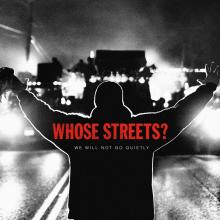
As filmmaking, Whose Streets is dramatic and powerful. As a historical document, it holds even more weight.

I believe some from the older generations who were a part of the civil rights era have forgotten their roots in civil disobedience. Instead of inviting young people to be a part of planning, they speak from podiums, give grand introductions, tout their lengthy titles and positions held. Many are resentful and critical of younger activists. They believe the news media’s portrayal of Black Lives Matter instead of getting to know who these young people are.

On election night, I hunkered down in my living room, eyes glued to the television, waiting for the announcement. When talking heads announced that Hillary Clinton conceded the election to Donald Trump, my body shook — literally. I could not control it. I had never experienced anything like it. A cry rose from the pit of my stomach and quickly turned into a primal scream.

We are here for nothing less than a profound awakening of faith that lives at the center of a people’s movement for economic and racial inclusion, justice, and healing.
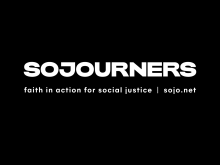
On Monday, Sept. 12, Rev. Dr. Jim Wallis opened Calvin’s Center for Faith & Writing fall 2016 series with a speech about his new book, “America’s Original Sin: Racism, White Privilege, and the Bridge to a New America.” The bestselling author, activist, preacher and theologian drew a large crowd to the CFAC. All seats were full, and some visitors had to park in overflow lots near the Seminary and science building.
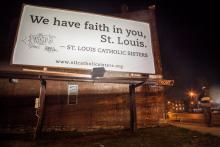
This Mississippi River city and the surrounding area have taken some hits over the past year, from the ongoing racial tensions over police shootings in Ferguson to the deadly and costly floods that struck the region earlier this year. Even St. Louis’ pro football team has bailed, as the Rams announced in January that they are decamping to the sunnier climes of Southern California.
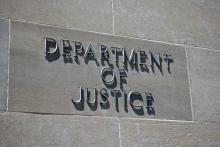
Attorney General Loretta E. Lynch filed a civil rights lawsuit against Ferguson, Mo. after the St. Louis suburb rejected an agreement with the Justice Department that would have reformed their criminal justice system. “Their decision leaves us no further choice,” Lynch said.
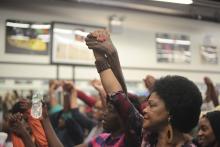
7 Our ancestors sinned the great sin of instituting slavery; they are no more—but we bear their shame.
8 The system of slavery and institutionalized racism ruled over us,
and there is no one to free us from their hands.
9 We get our bread at the risk of our lives because of the guns on the streets.

In the last year, Black Lives Matter activists have changed the consciousness of a nation. And all along the way they have vocally advocated for concrete policy changes. But now their demands are collected in a single, beautiful website, designed to inspire activists and provoke officials.

It can be dangerous to be black. In 2012, a black person was killed every 28 hours by law enforcement officials or self-styled "vigilantes." About 27 percent of African-Americans live below the poverty line. Black families are seven times more likely to be homeless than white families. African-Americans are four times more likely to be murdered than the national average.
It's not about semantics. It's about systems (and minds) that need to be changed for the betterment of the future. And that future will, in fact, be better for all lives.
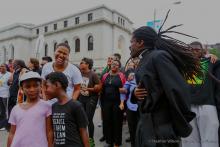
PHOTO ESSAY: On Monday, fifty-seven people were arrested as part of the #UnitedWeFight march and peaceful civil disobedience at the Thomas F. Eagleton U.S. Courthouse. The march was in commemoration of the year-long resistance sparked in #Ferguson by the murder of #MikeBrown.
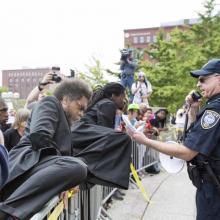
The latest killing happened two days before the 1-year anniversary of Michael Brown’s death when Christian Taylor, 19, crashed his SUV through the window of a car dealership in Arlington, Texas. Officers shot him in the course of a struggle. In fact, as I write this, there have been 601 lethal police shootings in 2015, 24 of them unarmed black men, according to an ongoing independent analysis by Washington Post: That’s an average of two unarmed black men shot dead by cops per month since January. This number does not include police shootings of black women, police killings that did not involve gunfire, or deaths while in police custody. Freddie Gray’s and Sandra Bland’s deaths are not included in the Washington Post tally.
Over the course of the year since Michael Brown died, we have learned critical lessons that have fueled the movement, bringing together young activists, clergy, and evangelicals in unlikely, yet cohesive alliance.
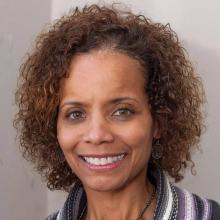
Young people ignited by injustice, refusing to back down. A nation waking up to the reality of racial disparities. And a church that can no longer remain silent. This, says Eden Theological Seminary professor Leah Francis Gunning, is the real “Ferguson Effect.” As she protested in Ferguson over the past year, Gunning collected interviews from clergy and young organizers. The result is Ferguson and Faith: Sparking Leadership & Awakening Community (Chalice Press, 2015), a behind-the-scenes look at the role of the church in the Black Lives Matter movement. Sojourners interviewed Francis to learn more about the religious community’s role in supporting and sustaining a racial justice movement started by young activists.

Christians do a disservice to the gospel message by removing the cultural context from Jesus’s ministry and watering down his message to one of religious platitudes. We like to generalize the words of Jesus and transform his life into a one-size-fits-all model that can apply to all of humanity.
Throughout the New Testament Jesus was more complex than we give him credit for.
He intentionally, purposefully, and passionately addressed very specific causes. He radically addressed the diverse and complicated conflicts of the time and shattered the status quo.
Jesus wasn’t just preaching a universal salvation message for the world, but he was also addressing specific political, social, and racial issues. He was helping those who were being abused, violated, and oppressed.